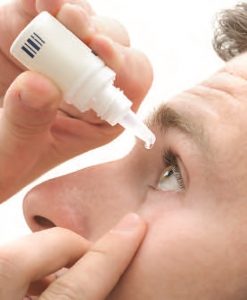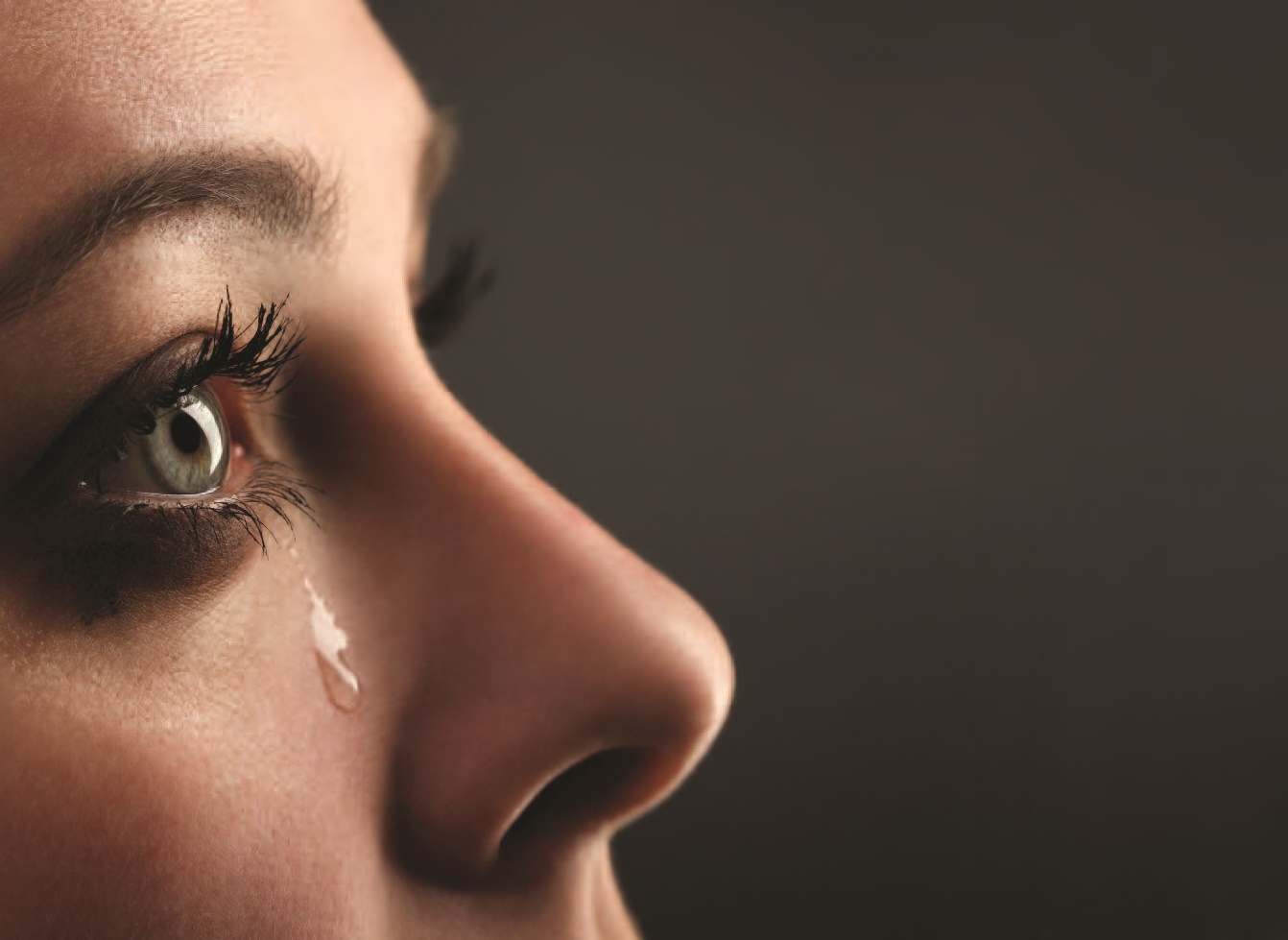Dry Eye Syndrome is a growing problem in the United States. And no, there’s nothing fun about it.
By Caleb MacLean
 What is it about tears that make them such fertile territory for songwriters? Think, for instance, about how many times you’ve heard the words Don’t Cry as song lyrics: The Four Seasons (“Big Girls Don’t Cry”), Melissa Manchester (“Don’t Cry Out Loud”), Guns n Roses (“Don’t Cry”) and of course the signature song from Evita (“Don’t Cry for Me, Argentina”). The irony is that the inability to produce healthy tears can be a sign of a serious medical situation. Indeed, keratoconjunctivitis sicca—better known as Dry Eye Syndrome—affects millions of people each year. Based on data derived from the 2013 National Health & Wellness Survey, the percentage of Americans with dry eye could be as high as 6.8 percent—and the number of cases promises to increase steadily in the near future.
What is it about tears that make them such fertile territory for songwriters? Think, for instance, about how many times you’ve heard the words Don’t Cry as song lyrics: The Four Seasons (“Big Girls Don’t Cry”), Melissa Manchester (“Don’t Cry Out Loud”), Guns n Roses (“Don’t Cry”) and of course the signature song from Evita (“Don’t Cry for Me, Argentina”). The irony is that the inability to produce healthy tears can be a sign of a serious medical situation. Indeed, keratoconjunctivitis sicca—better known as Dry Eye Syndrome—affects millions of people each year. Based on data derived from the 2013 National Health & Wellness Survey, the percentage of Americans with dry eye could be as high as 6.8 percent—and the number of cases promises to increase steadily in the near future.
Dry eye syndrome can cause a number of symptoms, including but not limited to foreign body sensation (or a “sandy” feeling in the eyes), excessive tearing, burning, and redness. Blurred vision and eye fatigue can also be worsened with dry eye syndrome.
“The eyes can become dry when the quality or quantity of the tears fails to lubricate the eyes adequately,” explains Dr. Erica O’Lenick, an optometry specialist at the Santamaria Eye Center in Edison. “The tear film has three layers, all of which contribute to keeping the ocular surface healthy. With any disruption of a layer, the inflammation cycle that causes dry eye will begin in a chronic manner.”
Symptoms can be exacerbated by smoking, contact lens wear, heating, and air conditioning, and environmental or hormonal changes. The risk for dry eye syndrome increases with age, and is most prevalent in middle-aged women, adds Dr. O’Lenick.
According to Dr. Joel Confino of The Eye Care and Surgery Center in Westfield, until relatively recently dry eye syndrome was typically treated with artificial teardrops, often of the over-the-counter variety. “Now it’s become a more evolved specialty, with more high-tech solutions available, such as tiny ‘plugs’ to be gently inserted to prevent excessive drainage of much-needed tears,” he says.
Even more advanced solutions are on the horizon, Dr. Confino adds—one being the TrueTear, which was approved by the FDA about a year ago. The device is battery-operated and consists of two tips that are inserted into the upper nose to stimulate tear production. TrueTear will likely be used in conjunction with other treatment options to provide the most comprehensive relief.
Both doctors have noted a steady increase in dry eye cases over the past several years. One explanation is screen time. “Computer overuse is the most common cause of dry eye in young patients today,” says Dr. O’Lenick. “With changes in technology, many people are using their computers for approximately 10 hours or more daily. While on the computer, we often forget simple measures like blinking to continuously keep the eyes lubricated. Decreasing screen time and remembering to take breaks often to blink may help in preventing dry eye discomfort while working.”
Dry eye causes can be traced not only to the tear glands themselves but also to the oil glands in the eye.
“In fact,” says Dr. Confino, “there are two types of tear glands—those that produce regular tears and those that are responsible to produce the tears that are a reaction to irritation, allergies, or emotions. Paradoxically, at times the dry eye condition will actually stimulate the overproduction of the latter type of tears.”
He says that issues where the oil glands become blocked can also be a factor since healthy eyes need a mix of sufficient tears and oil. This is called evaporative dry eye and it is often found with meibomian gland dysfunction (MGD)—which occurs when the glands that produce the oils for the tear film become clogged and no longer provide the necessary help for the tears to stick to the ocular surface.
When this occurs, the tears evaporate more quickly, causing the eyes to become dry. This is the most common kind of dry eye, points out Dr. O’Lenick, but not the only kind—which is why it is important to see an eye care physician to determine the type of dry eye that you may have.
Other types of dry eye syndrome include aqueous deficient dry eye, which occurs when the body does not produce enough tears. This can be the result of autoimmune diseases such as Sjogren’s syndrome, lupus, or rheumatoid arthritis. Taking certain medications like antihistamines or blood pressure medications may cause a decrease in tear production, too. Systemic diseases, such as diabetes or hypertension, may contribute to dry eye syndrome, as well.
According to Dr. O’Lenick, the treatments for dry eye depends on the cause and type of dryness. Warm compresses and eyelid scrubs are a conservative treatment that may allow the oil glands to better function with evaporative dry eye and MGD. Mild dry eye symptoms may be relieved with the aforementioned over-the-counter artificial tears and ointments. For moderate to severe symptoms, your physician may recommend a prescription eye drop or anti-inflammatory medication.
Patients may also benefit from the use of omega 3 fish oil vitamins to help decrease the inflammation that causes dry eye.
 What’s the secret to good eye health? Dr. Confino recommends balancing good nutrition with getting enough rest and also treating the eye as if it were a muscle—“that is, exercising it and caring for it with the same respect as any large muscle in the body.”
What’s the secret to good eye health? Dr. Confino recommends balancing good nutrition with getting enough rest and also treating the eye as if it were a muscle—“that is, exercising it and caring for it with the same respect as any large muscle in the body.”
When is it time to see the doctor if you suspect you have some form of dry eye syndrome? As a rule, when symptoms such as tiredness, scratchiness, itchiness, and burning—often accompanied by redness, blurred vision, and sometimes even uncontrollable watering—becomes uncomfortable, but before they reach the point of being unbearable.
“Early detection and management of dry eye is key in preventing symptoms,” Dr. O’Lenick says
 Joel Confino’s specialty is cataract surgery. He is a graduate of the Albert Einstein College of Medicine and completed his Ophthalmology residency at Mount Sinai School of Medicine.
Joel Confino’s specialty is cataract surgery. He is a graduate of the Albert Einstein College of Medicine and completed his Ophthalmology residency at Mount Sinai School of Medicine.
 Erica O’Lenick is a graduate of the Pennsylvania College of Optometry. She has experience in pediatric, binocular vision care, ocular disease, and anterior segment care.
Erica O’Lenick is a graduate of the Pennsylvania College of Optometry. She has experience in pediatric, binocular vision care, ocular disease, and anterior segment care.
Editor’s Note: According to the National Eye Institute, left untreated, dry eye can lead to scarring of the cornea. Some studies have suggested that around 70% of the elderly may suffer from dry eye at one time or another. The condition is especially prevalent in China, where a 2014 article in the Journal of Ophthalmology noted that 17% percent of the population exhibits symptoms.





